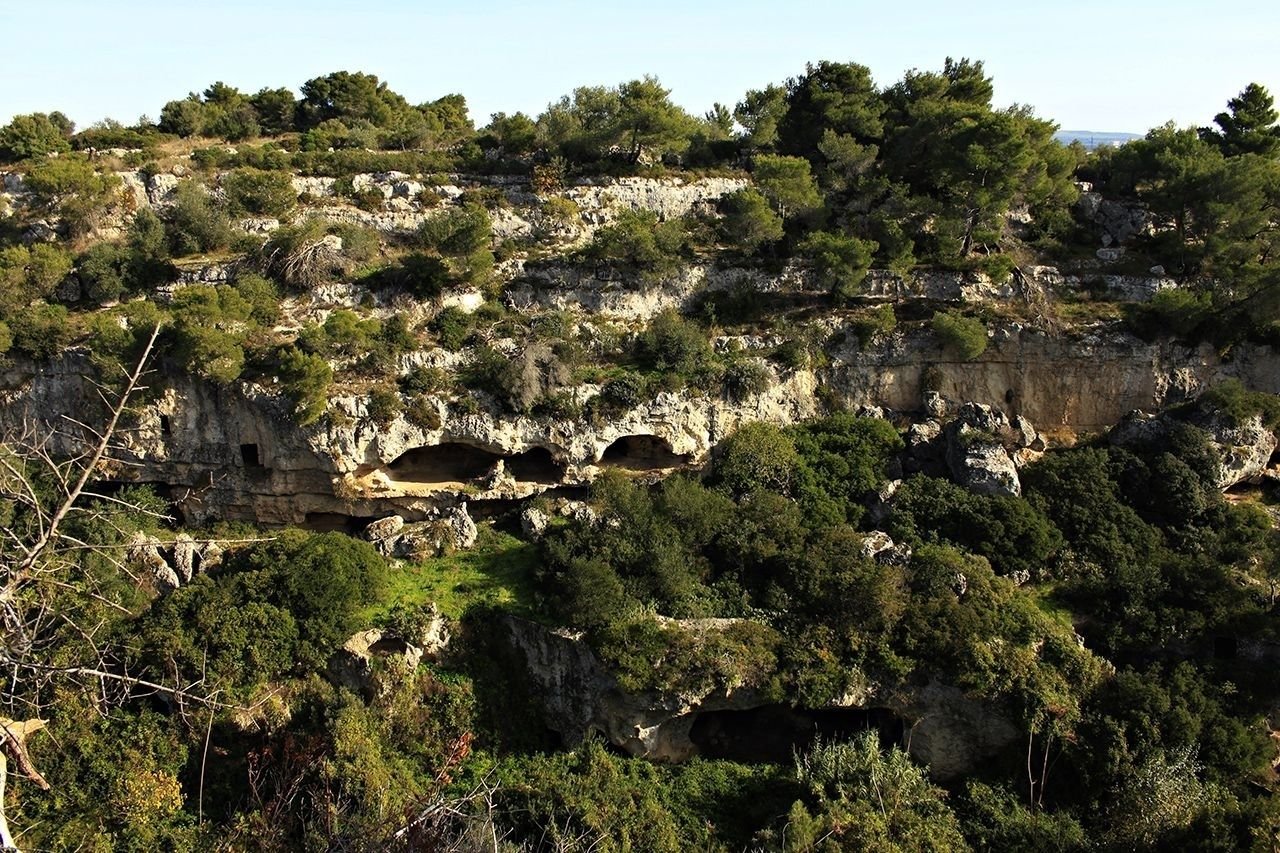This impressive and beautiful ravine, among the most spectacular of the entire Ionian Arch, is certainly able to compete for grandeur and charm with the most celebrated canyons in the world. The gully, which has been inhabited since prehistoric times, provided a safe shelter from the invaders, and allower man to live in it permanently from the early Middle Ages probably up to the 11th-12th centuries, practising among these steep walls cults, arts, professions and crafts necessary for civil communities. The ravine of Petruscio offers a unique spectacle: it seems to consist of a series of “skyscrapers” of caves with connected floors. The caves-houses that make up the village are over a hundred, all carved into the friable rock of the two ravine embankments for a length of about six hundred meters. In these “industriousness hives” the social life of the community was well organized: there were agricultural centers, centers of religious worship, residential settlements, warehouses, cemeteries, etc. The canyon also hosts three rupestrian churches, without frescoes but rich in devotional graffiti, of which the most impressive is the so-called “Cathedral”.
On the plain of the ravine embankments, in particular on the west side near the old route of the former Strada Statale 100 (SS100), there are numerous traces of the medieval settlements that were part of the large hypogeum village. The most important monument is undoubtedly represented by the remains of the Tower of Petruscio, almost certainly pre-Norman building with a round plan. In the surroundings of the Tower, the remains of mangers, carriage roads, troughs, craft workshops and quarries can still be seen.

